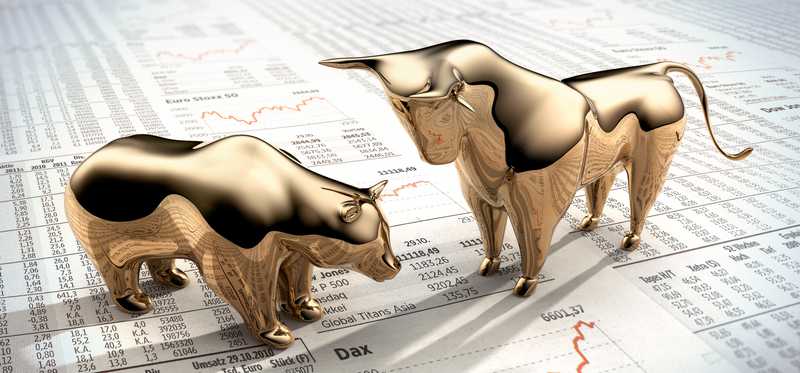Thinking of Selling Your Growth Stocks? 10 Reasons to Sit Tight

Thinking of Selling Your Growth Stocks? 10 Reasons to Sit Tight
When will it end?
It's been a rough few months for growth stock investors as many popular names have crashed as much as 90%. The Nasdaq has fallen more than 30% in just six months, and Cathie Wood's ARK Innovation ETF, a good proxy for high-growth stocks, is down about two-thirds since November.
No one knows when the sell-off will end, but ditching your growth stocks would be a bad move. Here are 10 reasons why.
5 Stocks Under $49
Presented by Motley Fool Stock Advisor
We hear it over and over from investors, “I wish I had bought Amazon or Netflix when they were first recommended by The Motley Fool. I’d be sitting on a gold mine!" It's true, but we think these 5 other stocks are screaming buys. And you can buy them now for less than $49 a share! Click here to learn how you can grab a copy of “5 Growth Stocks Under $49” for FREE for a limited time only.
Previous
Next

1. Growth stocks often recover first
It's impossible to time the market bottom, but whenever it happens, high-growth stocks will likely be the first to charge out of the gate. This has been true in past bear markets and looks set to repeat itself this time around, just as the plunge in high-growth stocks was a harbinger for the rest of the market.
Stock moves on May 12 offered a preview of the early stages of a recovery when stocks mostly finished flat, but a number of high-growth stocks were up double digits on no news, including Shopify, Roku, and Upstart. That's a sign that such stocks could explode when the recovery begins in earnest.
Previous
Next

2. Growth stocks are cheap
Just as market euphoria pushed growth stocks too high in 2021, now market fear seems to pushing a number of growth stocks to irrational lows. Some even trade below where they were when the pandemic started.
Shopify, for example, closed on May 12 at $353.51. In February 2020, before the pandemic took hold in the U.S., it peaked at $593.89. So it's down about 40% from that level even as revenue soared in 2020 and 2021.
While the company does face some difficult comparisons as the global economy reopens, it's easy to see how the stock is oversold right now.
Previous
Next

3. You'll miss out on the recovery
You could sell your stocks right now and walk away, but if you do, you won't know when to get back into the market. It's never clear when the market bottom happens in real time. That doesn't become evident until weeks or even months later, and the psychological hurdle of getting back into stocks after you've gotten out can be a high one.
While it can be hard to stomach those paper losses, you're better off staying in so you don't miss out the recovery. The next bull market will likely send stocks even higher than the last peak, though that may not come for years.
ALSO READ: How to Cope With a Prolonged Stock Market Correction
Previous
Next

4. This has happened before
While a sell-off of 80% or 90% in dozens of stocks may be unusual, it's not out of the ordinary. In the past few bear markets, there have been a number of similar crashes. Amazon famously fell more than 90% in the dot-com bust before going on to be one of the best-performing stocks of all time, and Booking Holdings, Priceline at the time, was down more than 98% at one time.
In the great financial crisis, stocks like Lululemon and Ford also fell by more than 90%, and in the coronavirus crash, Wayfair and Dave & Buster's were both down more than 90% from previous peaks.
Previous
Next

5. There's a lot of upside potential
Selling your growth stocks now with prices down sharply doesn't just mean you're missing out on a recovery. You also could be missing out on multibagging returns.
Many of the stocks that have plunged are down in part because of temporary conditions. E-commerce stocks like Shopify are up against difficult comparisons from the first quarter, the last period before COVID-19 vaccines become available to the general public. But as comparisons get easier, the year-over-year growth rates in those stocks should improve, acting as a natural tailwind.
5 Stocks Under $49
Presented by Motley Fool Stock Advisor
We hear it over and over from investors, “I wish I had bought Amazon or Netflix when they were first recommended by The Motley Fool. I’d be sitting on a gold mine!" It's true, but we think these 5 other stocks are screaming buys. And you can buy them now for less than $49 a share! Click here to learn how you can grab a copy of “5 Growth Stocks Under $49” for FREE for a limited time only.
Previous
Next

6. Be greedy when others are fearful
Warren Buffett has famously advised, "Be greedy when others are fearful, and fearful when others greedy." In other words, to have success in the stock market, you have to do the opposite of the crowd.
Based on that advice, now is the time to be greedy, not fearful. While you might not have the cash or the willingness to buy more stocks, selling at this point would likely be a mistake.
Market sentiment shouldn't dictate your investment decisions, and part of the reason why Buffett has been so successful is because he's been able to be greedy when most investors are fearful.
Previous
Next

7. You can't time the market
Selling your stocks now with a vague plan of buying them back at some point in the future is just an attempt at market timing, and you can't time the market.
Nobody knows when the bear market will bottom out, but we do that it will eventually reverse and when it does the market is likely to top its previous highs. As the saying goes, time in the market beats timing the market.
Previous
Next

8. A lot of negativity is priced in
With inflation factored in, the Nasdaq is basically flat compared with its peak in February 2020, just shy of 10,000. But most tech companies have seen revenue and profits take off since then, so the majority of those stocks are now cheaper than they were before the pandemic started.
Valuations have fallen because investors seem to be pricing in a recession, so the Nasdaq may not have much further to fall if the economy slides into a recession.
ALSO READ: Is a Recession Coming? More Experts Seem to Think So
Previous
Next

9. Check your investing theses
Most growth stocks are down because market sentiment has shifted over fears of rising interest rates and a recession, but you may want to revisit each one of the stocks you own to see if the decline is just a case of changing market conditions or if there's a fundamental change in a business.
Netflix, for example, plunged in April after it reported a surprise decline in first-quarter subscribers and predicted another drop in the current quarter, a sign that the company may be reaching maturity faster than expected. Given that, you may want to reassess your investing thesis on Netflix.
Previous
Next

10. The market is forward looking
Bear markets often end before many investors expect. Economic data doesn't have to reverse. There merely has to be a sign that the worst is over. During the financial crisis, for example, the market bottomed out several months before unemployment peaked. Since fear is often what drives bear markets, the reversal in stocks will come when fear has peaked.
It might only take a couple of economic data points or a new government response to reassure the market and get stocks moving higher again.
5 Stocks Under $49
Presented by Motley Fool Stock Advisor
We hear it over and over from investors, “I wish I had bought Amazon or Netflix when they were first recommended by The Motley Fool. I’d be sitting on a gold mine!" It's true, but we think these 5 other stocks are screaming buys. And you can buy them now for less than $49 a share! Click here to learn how you can grab a copy of “5 Growth Stocks Under $49” for FREE for a limited time only.
Previous
Next

It's always darkest before dawn
There's no doubt that drawdowns of 80% or 90% are brutal, but the lower stocks go, the more likely a recovery gets. While we could see one or more bear market rallies in the coming months, growth stocks investors should know that the market will eventually improve.
Buy-and-hold investing isn't always easy, but it's one of the best ways to make money over the long term in the stock market. Though market drawdowns happen faster than market gains, bull markets tend to run further than bear markets, rewarding long-term investors over the long run.
John Mackey, CEO of Whole Foods Market, an Amazon subsidiary, is a member of The Motley Fool’s board of directors. Jeremy Bowman has positions in ARK Innovation ETF, Amazon, Netflix, Roku, Shopify, and Upstart Holdings, Inc. The Motley Fool has positions in and recommends Amazon, Booking Holdings, Lululemon Athletica, Netflix, Roku, Shopify, and Upstart Holdings, Inc. The Motley Fool recommends Dave & Busters Entertainment and Wayfair and recommends the following options: long January 2023 $1,140 calls on Shopify and short January 2023 $1,160 calls on Shopify. The Motley Fool has a disclosure policy.
Previous
Next
Invest Smarter with The Motley Fool
Join Over Half a Million Premium Members Receiving…
- New Stock Picks Each Month
- Detailed Analysis of Companies
- Model Portfolios
- Live Streaming During Market Hours
- And Much More
READ MORE
HOW THE MOTLEY FOOL CAN HELP YOU
-
Premium Investing Guidance
Market beating stocks from our award-winning service
-
The Daily Upside Newsletter
Investment news and high-quality insights delivered straight to your inbox
-
Get Started Investing
You can do it. Successful investing in just a few steps
-
Win at Retirement
Secrets and strategies for the post-work life you want.
-
Find a Broker
Find the right brokerage account for you.
-
Listen to our Podcasts
Hear our experts take on stocks, the market, and how to invest.
Premium Investing Services
Invest better with The Motley Fool. Get stock recommendations, portfolio guidance, and more from The Motley Fool's premium services.